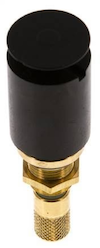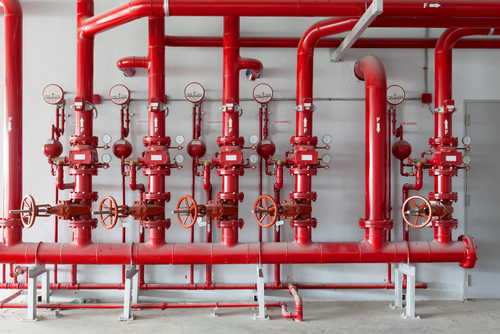How To Install Automatic Drain Valves To Prevent Frozen Sprinkler Systems

Figure 1: Automatic drain valve
An automatic drain valve automatically releases water from sprinkler systems when the water pressure drops, preventing freezing and damage. This article explores the installation process for an automatic drain valve on a sprinkler system.
Features
- Construction: Automatic drain valves are typically made of durable materials such as brass, stainless steel, or high-quality plastics to withstand the rigors of outdoor use and exposure to water.
- Size and compatibility: Automatic drain valves come in various sizes to accommodate different pipe diameters commonly used in sprinkler systems, such as 12.7 mm (1/2 inch), 19 mm (3/4 inch), or 25.4 mm (1 inch).
- Connection types: Automatic drain valves are available in threaded or non-threaded versions.
- Compatibility with accessories: Automatic drain valves can be integrated with other accessories like timers or revision sets, allowing for enhanced control, automation, and maintenance of the sprinkler system.
- Additional features: Some automatic drain valves may include additional features, such as manual override options or indicators that show the valve's open or closed status.
Automatic drain valve installation

Figure 2: Sprinkler system
- Familiarize with the sprinkler system: Understand the sprinkler system design, including the location of the main water supply line and the layout of the pipes.
- Identify suitable locations for drain valves: Automatic drain valves are installed at the lowest points of the system, allowing for proper drainage. Look for areas where water accumulates, such as low spots in the pipes or at the end of lateral lines. If the sprinkler line has multiple branches, employ as many automatic drains as possible to cover the entire area adequately. It is recommended to utilize 2 - 3 drain valves in each sector. This ensures comprehensive coverage and facilitates proper drainage.
- Shut off the water supply: Shut off the water supply to the system by locating and turning off the main shut-off valve. This valve is usually located near the point where the main water line enters the property. Open all the manual drain valves and allow the water to drain completely from the pipes.
- Uncover the sprinkler lines: Dig the region to uncover the sprinkler lines. This provides access for installing the tee fitting and automatic drain valve. The tee fitting allows for a connection between the existing pipe and the automatic drain valve. It provides a perpendicular outlet that allows the drain valve to be attached while maintaining water flow through the main pipe.
- Connect the tee fittings and valves: Thread each automatic drain valve into the tee fitting. Glue the tee onto the pipe. Apply the plumber's tape to the threads for easier removal and to ensure a proper seal. Use push-fit or compression fittings to connect to the tee for non-threaded valves.
- Install the tee fittings: Carefully cut the sprinkler line using a pipe cutter. Proceed to install the tee fittings with the attached automatic drain valves.
- Test the installed valve: Turn on the water supply and check the automatic drain valves while the valve holes are open. Watch for any signs of water discharge or draining from the valve. The valve should open and release water when the pressure reaches a certain threshold. Shut off the sprinkler system after observing the automatic drain valve's proper function while the irrigation system runs. The valve should automatically drain the water once the system's pressure is turned off.
- Sprinkler map: Having a map or planogram with marked locations of the automatic drain valves allows to quickly identify and access the valves when needed during future maintenance.
- Restore the water supply: Once the installation and testing are complete, turn on the main water supply to restore water flow to the sprinkler system.

Figure 3: Sprinkler
FAQs
Where should I install automatic drain valves in my sprinkler system?
Install automatic drain valves at low points in the sprinkler lines where water accumulates, ensuring comprehensive drainage throughout the system.
Are automatic drain valves compatible with all types of sprinkler systems?
Yes, automatic drain valves are available in various sizes and configurations to accommodate different types of sprinkler systems, including residential and commercial setups.
Do automatic drain valves work during power outages?
Yes, automatic drain valves operate based on water pressure and do not rely on electricity, making them effective even during power outages.
Can I manually override an automatic drain valve if needed?
Most automatic drain valves do not have a manual override feature. They are designed to operate automatically based on water pressure and should not be manually forced open or closed.





